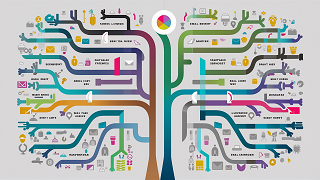
Strategies for Effective Email Sales Funnels
In the crowded digital marketplace, capturing attention and turning leads into paying customers is a constant battle. While social media and paid ads have their place, a well-crafted email sales funnel remains a powerful weapon in your marketing arsenal. It’s like your own personal pipeline, nurturing prospects through a series of targeted messages and nudging them towards the sweet conversion nectar – a purchase.
But crafting an effective email sales funnel isn’t simply praying for the rain. It’s about strategic engagement, building trust and guiding your audience towards a desirable outcome. So, grab your metaphorical funnel and let’s explore some key strategies to turn those drips into a flowing stream of conversions.
-
Personas & Preferences: Tailoring Your Funnel for Maximum Resonance
Before casting your email net, understand who you’re trying to catch. Research your ideal customer, their pain points, aspirations and preferred communication style. Are they casual banter seekers or formal address fans? Do they crave bite-sized info nuggets or in-depth analysis? Knowing your audience is like putting the right bait on your hook – it attracts the right fish and increases your chances of a catch.

-
Opt-In Like a Magnet: Attract, Don’t Trap
Nobody wants to feel ambushed by unwanted emails. Make subscribing to your funnel a valuable proposition, not a forced subscription. Offer enticing lead magnets like exclusive content, discounts or early access to sales. And remember; be upfront about what they’re signing up for. Transparency builds trust, the secret ingredient for long-term engagement.

-
Welcome Aboard: Setting the First Impression
The first email in your funnel sets the tone for the entire journey. Welcome your new subscribers with warmth and gratitude. Briefly introduce yourself or your brand, reiterate the value they’ll receive and hint at the exciting things to come. This first touchpoint is crucial for creating a positive first impression and laying the foundation for a lasting relationship.

-
Segment and Tailor: Nurturing Different Journeys
Treat your audience as individuals, not a combined group. Segment your list based on interests, demographics or purchase history. This allows you to tailor your emails to their specific needs and preferences. Imagine two paths in your funnel, one for tech enthusiasts and another for budget-conscious buyers. Sending targeted content keeps them engaged and increases the likelihood of conversion.

-
Weaving Tales: Crafting Narratives that Captivate and Convert
Facts and figures are important, but stories resonate. Weave narratives into your emails that connect with your audience on an emotional level. Share customer success stories, showcase your brand’s values or tell the origin story of your product. Emotional engagement builds trust and makes your brand more relatable, paving the way for conversions.

-
Offer Value, Not Just Sales Pitches
Nobody enjoys being bombarded with relentless sales pitches. Focus on providing value in every email. Share informative content, helpful tips, industry insights or exclusive interviews. Position yourself as a trusted advisor, not just a salesperson. Building expertise and goodwill sets the stage for a smooth transition to sell of your product or service in the funnel.

-
Scarcity and Urgency: The Gentle Nudge
A little dose of scarcity and urgency can work wonders. Offer limited-time discounts, early bird access or bonus content with deadlines. However, avoid being manipulative or resorting to spammy tactics. The goal is to gently nudge your audience towards action, not create panic or anxiety.

-
Call to Action: The Bridge to Conversion
Every email needs a clear call to action (CTA). Whether it’s visiting a landing page, downloading a white paper or making a purchase, tell your audience exactly what you want them to do next. Make your CTA prominent, easy to understand and irresistible. Remember, even the most beautifully crafted email falls short if it doesn’t provide a clear path for conversion.

-
Analyze and Optimize: Continuous Improvement
Your email sales funnel is a living, breathing entity. Track metrics like open rates, click-through rates and conversion rates. A/B test (An A/B test measures engagement for different versions of the same email with a sample of your recipients. After creating your marketing email, you’ll create a version B to test how a single variation impacts email opens or clicks) different subject lines, content formats and CTAs to see what resonates with your audience. Analyze the data, identify areas for improvement and continuously refine your funnel to unlock its full potential.

Don’t vanish after the conversion. Continue to nurture your relationship with your customers. Send them thank-you emails, offer them exclusive deals and keep them engaged with valuable content. Remember, loyal customers are your biggest champions, spreading the word and boosting your conversions through word-of-mouth marketing.
Building an effective email sales funnel is an iterative process. Experiment, test and refine your strategies based on your audience and data. By employing these tips, you can transform your email marketing from a scattered spray to a focused stream, confidently guiding your
Categories
- Business Growth Strategies (143)
- Customer Experience and Retention (23)
- Digital Marketing and SEO (29)
- Financial Planning and Investment (25)
- Leadership and Team Management (28)
- Personal Development and Productivity (71)
- Technology and Innovations (53)
- USA Biz Growth (1)
Subscribe To Our Newsletter













